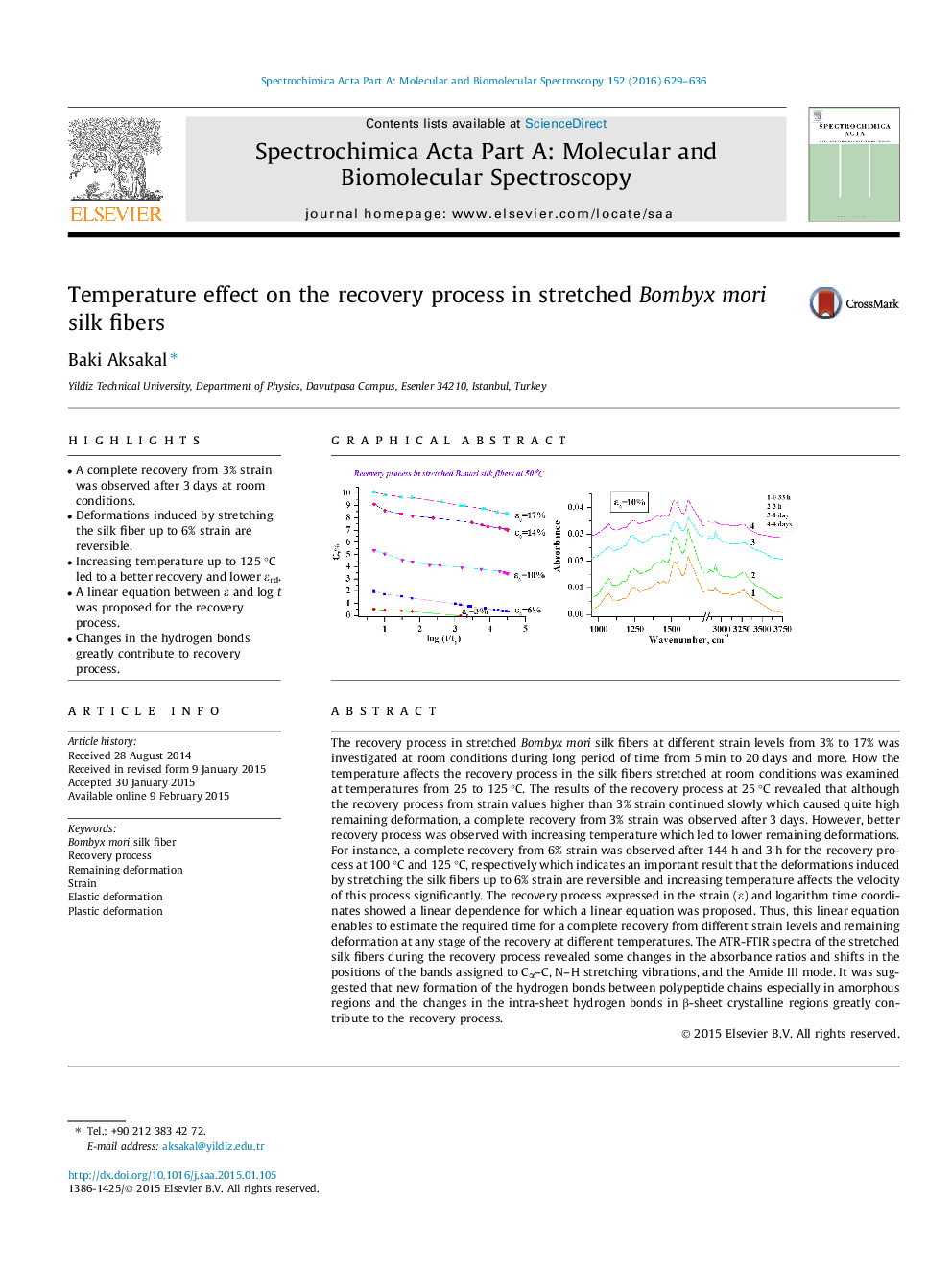| Article ID | Journal | Published Year | Pages | File Type |
|---|---|---|---|---|
| 1229818 | Spectrochimica Acta Part A: Molecular and Biomolecular Spectroscopy | 2016 | 8 Pages |
•A complete recovery from 3% strain was observed after 3 days at room conditions.•Deformations induced by stretching the silk fiber up to 6% strain are reversible.•Increasing temperature up to 125 °C led to a better recovery and lower εrd.•A linear equation between ε and log t was proposed for the recovery process.•Changes in the hydrogen bonds greatly contribute to recovery process.
The recovery process in stretched Bombyx mori silk fibers at different strain levels from 3% to 17% was investigated at room conditions during long period of time from 5 min to 20 days and more. How the temperature affects the recovery process in the silk fibers stretched at room conditions was examined at temperatures from 25 to 125 °C. The results of the recovery process at 25 °C revealed that although the recovery process from strain values higher than 3% strain continued slowly which caused quite high remaining deformation, a complete recovery from 3% strain was observed after 3 days. However, better recovery process was observed with increasing temperature which led to lower remaining deformations. For instance, a complete recovery from 6% strain was observed after 144 h and 3 h for the recovery process at 100 °C and 125 °C, respectively which indicates an important result that the deformations induced by stretching the silk fibers up to 6% strain are reversible and increasing temperature affects the velocity of this process significantly. The recovery process expressed in the strain (ε) and logarithm time coordinates showed a linear dependence for which a linear equation was proposed. Thus, this linear equation enables to estimate the required time for a complete recovery from different strain levels and remaining deformation at any stage of the recovery at different temperatures. The ATR-FTIR spectra of the stretched silk fibers during the recovery process revealed some changes in the absorbance ratios and shifts in the positions of the bands assigned to Cα–C, N–H stretching vibrations, and the Amide III mode. It was suggested that new formation of the hydrogen bonds between polypeptide chains especially in amorphous regions and the changes in the intra-sheet hydrogen bonds in β-sheet crystalline regions greatly contribute to the recovery process.
Graphical abstractFigure optionsDownload full-size imageDownload as PowerPoint slide
